#Atlantic convoy
Text

A British Depth Charge crew swings into action aboard an armed trawler - Atlantic Ocean 1940. At this stage of the war a desperate shortage of Royal Navy escort craft meant that many trawlers were commandeered for this kind of work.
#world war two#1940s#worldwar2photos#history#ww2#wwii#ww2 history#wwii era#ww2colourphotos#world war 2#1940#royal navy#depth charge#atlantic#war in the atlantic#battle of the atlantic#Atlantic convoy#trawler
97 notes
·
View notes
Text
Sailors playing catch on the main deck of USS TEXAS (BB-35).
Date: 1942
Photographed by Frank Scherschel for LIFE Magazine. Identify by Peter DeForest.
LIFE Magazine Archives: 115772368

#USS Texas (BB-35)#USS Texas#New York Class#dreadnought#battleship#Battleship Texas#March#June#1942#united states navy#us navy#navy#usn#u.s. navy#World War II#World War 2#WWII#WW2#baseball#Atlantic Ocean#convoy duty#my post
81 notes
·
View notes
Photo
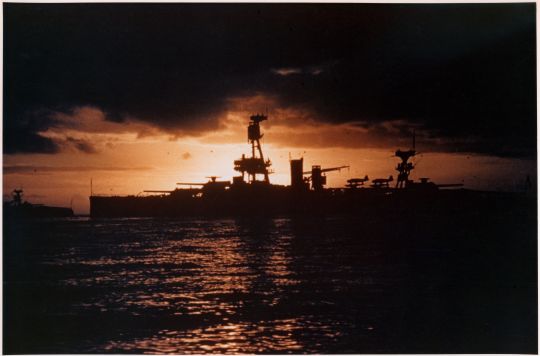
Cuirassé USS Texas (BB-35) en mission d'escorte de convoi dans l'Atlantique Nord – Eté 1941
Photographe : Lieutenant Dayton A. Seiler - Official U.S. Navy Photograph
©Naval History and Heritage Command - 80-G-K-387
#WWII#Bataille de l'Atlantique#Battle of the Atlantic#Convois atlantiques#Atlantic convoys#Marine américaine#US Navy#Marine de guerre#Marine militaire#Military navy#Cuirassé#Battleship#Classe New York#New York class#USS Texas#BB-35#Océan Atlantique#Atlantic Ocean#1941
14 notes
·
View notes
Photo

“It's Navy Week and These Are Busy Days for Boys of Canadian Navy,” Windsor Star. November 25, 1932. Page 20.
----
[Top Left]: MOVING quickly away from the depth charge explosion, photo shows one of Canada's newest fighting ships, a Fairmile. These speedy sub-chasers are doing excellent work of patrolling coasts and rivers threatened by enemy submarines.
[Top Right]: THIS dramatic photo shows anti-aircraft gunners on board a corvette of the Royal Canadian Navy. Once a ship gets into waters where an air attack may be expected these guns are manned continuously, for a bomber might swoop down out of the sun
[Bottom right]: What does he say? The signalman is probably reading a flag hoist from the convoy commodore about an alteration of coursse. Signals is one of the most interesting branches of the service. Trained ratings handle all the coding and decoding.
#battle of the atlantic#world war II#corvettes#convoy duty#convoy battle#convoy#subchasers#antisubmarine warfare#submarine warfare#depth charges#royal canandian navy#antiaircraft guns#canada during world war 2
1 note
·
View note
Text
Today's Flickr photo with the most hits: Canada's First Contingent, WWI. Seen in the Ottawa War Museum.
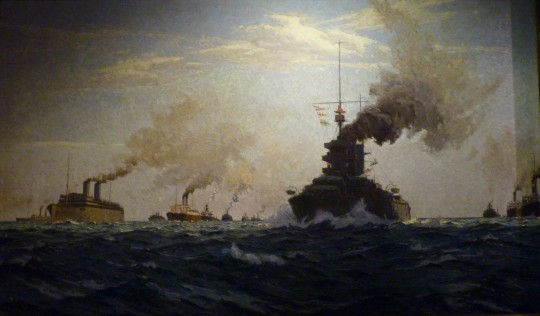
1 note
·
View note
Text

She is a bit shy in door 8 today, but a very pretty French girl - L'Hermione
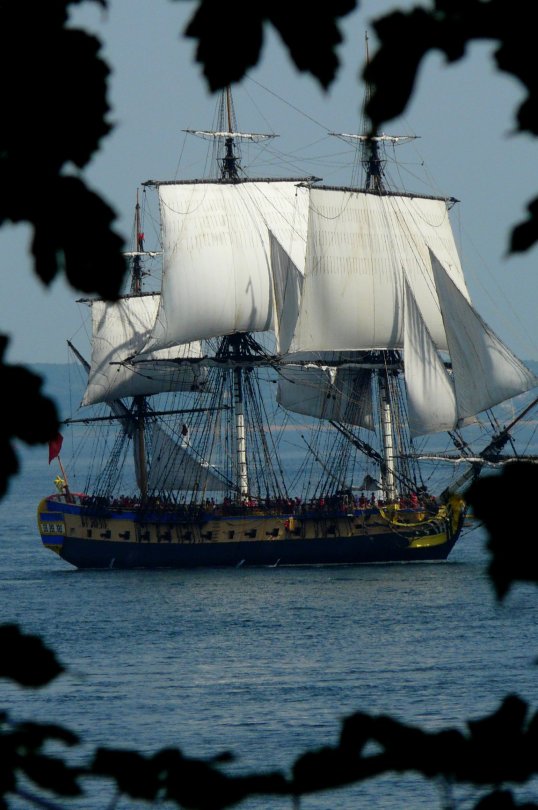
Départ de La frégate Hermione Lafayette du port de Brest, Fort du Dellec, 2019
More about her here:
Hermione is the name of the French frigate with which the Marquis de La Fayette returned to Boston in 1780 to support the American colonists in their fight for independence. The ship was completed in 1779 in the naval arsenal of Rochefort in a construction period of just eleven months, based on plans by Henri Chevillard and identical in construction to three other ships (la Courageuse, la Concorde, la Fée). These new light frigates were characterised by their manoeuvrability and speed. The Hermione was equipped with 26 cannons that could fire projectiles weighing 12 French pounds "poid de marc" (489.5 g). This is where the name "twelve-gun frigate" comes from. She also carried six or eight six-pounder guns. The empty weight was 1166 tonnes, the hull length 44.2 m, the overall length 65 m, the width 11.55 m and the depth 5.78 m. A sail area of more than 1500 m² was spread over three masts.
She experienced several battles and when the First Coalition War broke out on 20 April 1792, the Hermione returned to active service under Captain Martin. From 7 May 1793, she escorted convoys between Bayonne and Brest. In September 1793, she was tasked with escorting a convoy between the Loire estuary and the streets of Brest. On 20 September 1793, she ran aground off Le Croisic. The Hermione had a serious leak in the hull and could not be refloated in the receding tide. The crew threw 12 cannons and anchors overboard to stabilise the ship. The rising sea lifted the Hermione for a while, but she was so damaged that she could no longer pump water and sank to the bottom, where her hull began to disintegrate. At 1000 hours the next morning, Martin evacuated his crew in several fishing boats that had come to the rescue, salvaging as much equipment as possible, and was the last to leave the frigate.
The court martial that followed the wreck found the frigate's pilot, Guillaume Guillemin du Conquet, responsible for the frigate's loss; its commander, Captain Martin, was honourably acquitted.
A replica of the frigate has been under construction in a dry dock at the former Rochefort naval arsenal since 1997. As the original construction plans had been burnt for safety reasons, new plans had to be drawn up. The plans of a sister ship from the British Naval Museum, the Concorde, served as a model. The reconstruction of the Hermione was financed in part by the proceeds from the survey, grants from the French government and the EU as well as donations.
After its completion, the Hermione was launched in 2014. She left her building dock in early September 2014 for initial sea trials off the French Atlantic coast and sailed to North America in 2015, where she stayed for four months before sailing back. From 2 February 2018, the Hermione undertook a second major sea voyage from Rochefort to the Mediterranean via Tangier, Sète, Marseille and Toulon.
182 notes
·
View notes
Photo

The Spanish Empire in 1600.
« Atlante storico », Geo-Mondadori, 2000
via cartesdhistoire
The Spanish West Indian Empire was centered in the north on the Viceroyalty of New Spain and in the south on the Viceroyalty of Peru. It was enriched with the Philippine Islands from 1565, after the Spaniards discovered routes enabling them to cross the Pacific Ocean. In 1571, the city of Manila was founded there.
From 1546, the Spanish exploited the mines of Potosi (Upper Peru), from which most of the world's silver was quickly extracted. From 1564, a convoy system of galleons loaded with silver crossed the Atlantic Ocean to reach Spain. In the Pacific, once a year, the Manila Galleon transported silver from the New Spanish port of Acapulco to Manila in the Philippines. It made the return trip from the Philippines to Acapulco, carrying silk, porcelain, and Chinese lacquerware. From the 1590s, the value of this silver crossing the Pacific Ocean equaled all Atlantic trade combined.
74 notes
·
View notes
Text

USS Texas in the North Atlantic on convoy duty, 1941
17 notes
·
View notes
Text
Finding the ship that sent out a warning to the Titanic
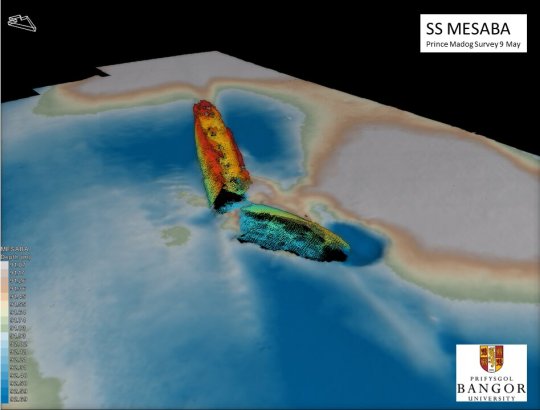
The ship that sent an iceberg warning to the RMS Titanic before the ocean-liner sank has been identified lying in the Irish Sea.
In 1912 the merchant steamship SS Mesaba was crossing the Atlantic and sent a warning radio message to the RMS Titanic. The message was received, but never reached the bridge. Later that night, the supposedly unsinkable Titanic hit an iceberg and sank on her maiden voyage, taking 1,500 lives and becoming the world's most infamous shipwreck.
The SS Mesaba continued as a merchant ship over the next six years before being torpedoed while in convoy in 1918. Read more.
355 notes
·
View notes
Text

February 12th 1429 saw the Battle of thee Herrings, also called the Battle of Rouvray
A follow up tolast Thursday's post.....
Yes it sounds like a sea battle possibly between our Icelandic neighbours in the North Atlantic, but the Battle of the Herrings was in fact a real battle, fought in France during the 100 years wars, this is a follow up my post last week where the Stewart Brothers helped relieve the siege of Orleans with a large contingent of Scots.
Commanded by Sir John Fastolf, a convoy of as many as 300 wagons was carrying supplies for the English besiegers of Orleans when it was attacked near the town of Rouvray by the French and their Scottish allies.
Deploying his wagons as an improvised fortification, Fastolf fought off the enemy and eventually drove them from the field. The battle owes its unusual name to the fact that the supplies being carried by the convoy included not just cannonballs, arrows and crossbow bolts but also a large number of barrels of herrings – particularly important as Lent was approaching, a time when the soldiers would have been forbidden from eating meat.
Over eager to set to the Auld Enemty, the 400-strong Scottish infantry, contrary to the orders of the Count of Clermont went on the attack against the English formation. This,forced the premature ending of the artillery bombardment for fear of striking their own forces. The Scots were not well protected by armour and great damage was inflicted on them by the English archers and crossbowmen who were shooting from behind the protection of their wagon fort.
At this point, the English, seeing that the remaining French forces were slow to join the Scots in the attack decided to go on a counterattack. They struck the rear and flanks of the disorganised French/Scottish forces and put them to flight. According to contemporary accounts the French/Scots army lost about 400 men including Sir John Stewart. Among the wounded was Jean de Dunois, known also as the Bastard of Orléans, who barely escaped with his life and who would later play such a crucial role, along with Joan of Arc, in the lifting of the siege of Orléans and the French Loire campaign which followed.
Some sources give the 13th as the date of the battle.
7 notes
·
View notes
Text
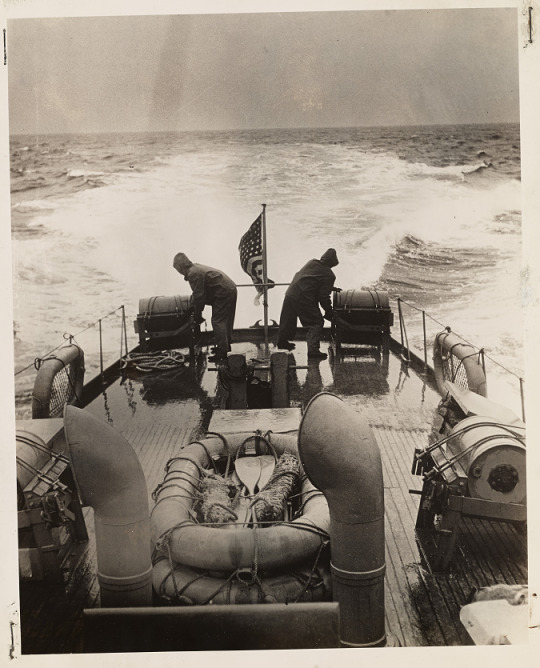

“Potent gifts ready for enemy subs,” February 19, 1943.
Record Group 26: Records of the U.S. Coast Guard
Series: Photographs of Activities, Facilities, and Personalities
File Unit: Convoys
Image description: Two Coast Guardsmen in hooded jackets stand at the stern of a Coast Guard “sub-buster”, each poised to release a large, barrel-shaped depth charge. The entire deck of the ship is wet.
Transcription:
From:
Public Relations Officer,
U.S. Coast Guard,
Washington, D.C.
POTENT GIFTS READY FOR ENEMY SUBS
Ready to drop a couple of potent presents from Uncle Sam to enemy undersea raiders, these Coast Guardsmen stand by the depth charge release levers at the stern of a Coast Guard ‘sub-buster’ on anti-submarine patrol in the Atlantic.
Upon detecting the presence of an enemy raider the ‘ash cans’ are hurled overboard, being adjusted to explode at a pre-determined depth. Old Glory flies briskly and triumphantly from the stern of the Coast Guard vessels which are doing valiant work in this global war.
#####
[handwritten on folder]
Potent gifts ready for enemy subs
02 19 43 (2)
29 notes
·
View notes
Text

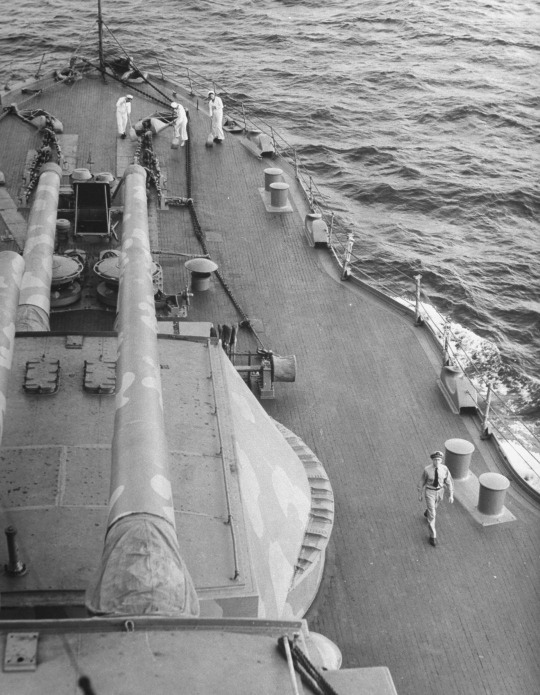
Captain Lewis W. Comstock walking on the forecastle of USS TEXAS (BB-35).
Photographed by Frank Scherschel of LIFE Magazine. Identified by Peter DeForest.
Date: 1942
LIFE Magazine Archives: 571148, 571141
#USS Texas (BB-35)#USS Texas#new york class#dreadnought#battleship#Battleship Texas#March#June#1942#convoy duty#Atlantic Ocean#world war 2#world war ii#WWII#WW2#WWII History#history#united states navy#us navy#navy#usn#u.s. navy#my post
72 notes
·
View notes
Text
Zack Beauchamp at Vox:
“Are we a country that looks out for each other ... or do you go down a path of amplifying anger, division and fear?”
That’s how Canadian Prime Minister Justin Trudeau described the stakes in his country’s upcoming election in an interview with Vox’s Today, Explained this week — outlining the 2025 contest as no ordinary election but a referendum on the very soul of Canada.
This existential framing is an unsubtle shot at Trudeau’s rival, Conservative Party leader Pierre Poilievre, a populist firebrand who is currently outpolling the prime minister by a wide margin. Poilievre rose to party leadership as a champion of the extremist trucker convoy that occupied Ottawa in January 2022, and since then has regularly pandered to far-right voters. He has proposed defunding the CBC (Canada’s widely respected public broadcaster) and repeatedly promoted a conspiracy theory in which Trudeau is in league with the World Economic Forum.
There’s a reason that Trudeau and many others have directly linked Poilievre to Trump: His political style practically invites it. But how accurate is the comparison? Is Canada really poised to be the next Western country to fall to the far-right populist global wave?
The answer, as best as I can tell, is mixed.
It’s true that, by Canadian standards, Poilievre is an especially hard-nosed figure, one far more willing to use extreme rhetoric and attack political opponents in harsh terms.
But on policy substance, he’s actually considerably more moderate than Trump or European radicals. Mostly eschewing the demagogic focus on culture and immigration that defines the new global far right, Poilievre is primarily concerned with classic conservative themes of limited government. His biggest campaign promises at present aren’t slashing immigration rates or cracking down on crime, but building more housing and repealing Canada’s carbon tax.
Poilievre is basically just a conventional Canadian conservative who wraps up his elite-friendly agenda in anti-elite language aimed at working-class voters. He’s the kind of politician that some Republicans wish Donald Trump was: a tame populist.
Understanding Poilievre isn’t just of interest to Canadians. There are reasons that his brand of populism is less virulent than what’s cropped up in many other Atlantic democracies — ones that hold important lessons for safeguarding democracy around the world.
Why Pierre Poilievre doesn’t fit the far-right script
The University of Georgia’s Cas Mudde, one of the leading scholars of the European right, has developed what is (to my mind) the most useful definition of radical right politics today. In his account, this party family — factions like Hungary’s Fidesz, France’s National Rally, and the US GOP — share three essential qualities.
First, they are nativist; they strongly oppose immigration and multiculturalism. Second, they are willing to use aggressive, even authoritarian measures to deal with social disorder like undocumented migration and crime. Finally, they are populist, meaning that they define politics as a struggle between a virtuous people and a corrupt elite.
Poilievre is certainly a populist. A right-wing operative and politician since he was a teenager, he rocketed to the top of the Conservative Party hierarchy after emerging as the most vocal champion of the 2022 Ottawa occupation. The uprising, which began against pandemic restrictions but swiftly became a broader far-right movement, was quite unpopular nationally. But inside the Conservative Party, there was enough support for its “pro-freedom” message that Poilievre rode his pro-convoy stance to victory in the party’s subsequent leadership election.
Since then, his populism has focused relentlessly on attacking the media, “globalists,” and (above all) Trudeau. Casting the fight between his Conservatives and Trudeau’s Liberals as the “have-nots” versus the “have-yachts,” he has argued that the prime minister embodies a debased Ottawa establishment out of touch with the needs and values of ordinary Canadians.
In a recent speech, Poilievre cast Trudeau as an “elitist” leader gunning for Canada’s freedoms. “If he had read Nineteen Eighty-Four, he would have thought it was an instruction manual,” Poilievre argued.
Somewhat ironically, Poilievre also believes Canada’s criminal justice system should be harsher. Blaming Trudeau for a recent rise in car thefts, Poilievre has argued for a reimposition of mandatory minimum sentences and other tough-on-crime policies. This means there’s at least a case that he also fits the second prong of Mudde’s definition of radical right politics.
But on the first prong, nativism, Poilievre clearly diverges from Trump and the European far right. He has publicly insisted that “the Conservative party is pro-immigration,” and he has made appealing directly to immigrants a central part of his campaign strategy.
[...]
Arising primarily in Western provinces (Manitoba, Saskatchewan, and Poilievre’s native Alberta), Canadian “prairie populism” historically draws strength from the notion that the federal government cares more about the population centers in Quebec and Ontario than the rest of the country. Prairie populism, which comes in left- and right-wing varieties, focuses far more on regional and economic issues than the cultural obsessions of the modern far right.
“We have had a long history of populism — particularly in the prairie provinces, the Western provinces — going back to the 1920s and 30s,” says Keith Banting, a professor at Queen’s University in Ontario. “Populism draws less extensively on anti-immigrant sentiment in Canada than it does almost anywhere else.”
Indeed, Poilievre’s biggest focus is cost-of-living issues — blaming ordinary people’s economic pain on high taxes and big government. His signature proposals are repealing Trudeau’s carbon tax, cutting spending to fight inflation, and removing restrictions on housing construction.
[...]
Poilievre’s “plutocratic populism”
While Poilievre is a very Canadian figure, fitting solidly into the right-wing prairie populist tradition, his politics also have a lot in common with a concept developed for the United States: political scientists Jacob Hacker and Paul Pierson’s “plutocratic populism.”
In their book Let Them Eat Tweets, Hacker and Pierson argue that the Republican Party uses culture war as a vehicle to attract popular support for a party that primarily caters to the interests of the rich. This strategy of “exploiting white identity to defend wealth inequality” allowed Trump’s GOP to attract downscale, non-college-educated voters without abandoning its core commitment to tax cuts and deregulation.
But in the United States, the populists ate the plutocrats. Trump’s anti-democratic instability and economic heterodoxy on issues like trade led some GOP billionaires, like the Koch family, to try and unseat him in the 2024 primary. They failed miserably and now are slinking back. In the Republican Party, MAGA is calling the shots.
Poilievre, by contrast, keeps his populism within plutocrat-acceptable bounds. His rhetorical gestures toward the working class are paired with solidly pro-rich policy views and a distinct absence of attacks on the democratic system itself.
In 2013, he claimed to be “the first federal politician to make a dedicated push” toward imposing US-style right-to-work laws in Canada. He has endorsed tax cuts for the rich and cuts to social spending. His trade policy is far more free-market than Trump’s. There are no signs that he would challenge the legitimacy of Canadian elections, let alone stage a January 6-style insurrection.
Vox reports on Conservative Party of Canada leader Pierre Poilievre's brand of right-wing populism is tamer than Donald Trump, Viktor Orbán, or Marine Le Pen's.
2 notes
·
View notes
Photo

“Men Like These Are Winning The Bitter Battle of the Atlantic,” Toronto Star. January 28, 1942. Page 19.
---
DRIFTING, EXHAUSTED SURVIVORS TELL THE STORY OF ANOTHER LOSS TO A U-BOAT
Keen-eyed observers on a ship in the Atlantic spotted these survivors of a torpedoed merchantman. At first only a speck, they drifted closer and what the rescuers saw was an overturned lifeboat with three men clinging weakly to it. Only one of them had sufficient strength to reach the rope thrown from the rescue ship. It is men such as these that are slowly but surely overcoming the difficulties in the Battle of the Atlantic, heroic people who reach the headlines only anonymously. They carry the tools of war to Britain.
#battle of the atlantic#world war II#torpedoed#anti-submarine patrol#submarine warfare#merchantman#merchant marine#maritime rescue#supply lines#shipping news#kriegsmarine#convoy duty
1 note
·
View note
Text

The German battleship Scharnhorst during gunnery trials in 1939. Scharnhorst was a German capital ship, alternatively described as a battleship or battlecruiser, of Nazi Germany's Kriegsmarine. She was the lead ship of her class, which included her sister ship Gneisenau. The ship was built at the Kriegsmarinewerft dockyard in Wilhelmshaven; she was laid down on 15 June 1935 and launched a year and four months later on 3 October 1936. Completed in January 1939, the ship was armed with a main battery of nine 28 cm (11 in) C/34 guns in three triple turrets. Plans to replace these weapons with six 38 cm (15 in) SK C/34 guns in twin turrets were never carried out.
ScharnhorstandGneisenauoperated together for much of the early portion of World War II, including sorties into the Atlantic to raid British merchant shipping. During her first operation,Scharnhorstsank the armed merchant cruiser HMS Rawalpindi in a short engagement (November 1939).ScharnhorstandGneisenauparticipated in Operation Weserübung (April–June 1940), the German invasion of Norway. During operations off Norway, the two ships engaged the battlecruiser HMS Renown and sank the aircraft carrier HMS Glorious as well as her escort destroyers Acasta and Ardent. In that engagementScharnhorstachieved one of the longest-range naval gunfire hits in history.
In early 1942, after British bombing raids, the two ships made the Channel Dash up the English Channel from occupied France to Germany. In early 1943,Scharnhorstjoined the Bismarck-class battleship Tirpitz in Norway to interdict Allied convoys to the Soviet Union.Scharnhorstand several destroyers sortied from Norway to attack a convoy but British naval patrols intercepted the German force. During the Battle of the North Cape (26 December 1943), the Royal Navy battleship HMS Duke of York and her escorts sank Scharnhorst. Only 36 men survived, out of a crew of 1,968.
2 notes
·
View notes
Photo

Fish in a barrel: An RAF Liberator sinks a surfaced U-boat
Although March 1943 marked the month with the highest Allied loss of shipping to U-boats in World War II, unknown to both sides, the course of the Battle of the Atlantic was about to change, and change dramatically, in favour of the Allies.
By the end of March the Allies had enough long-range and very-long-range patrol aircraft to cover the northern transatlantic convoy routes. The Allies installed a new ASV Mark III centimetre-wave radar on their aircraft. ASV Mark III could not be picked up by German Metox radar detectors, which detected the metre-wave transmissions of ASV Mark II radar. Less susceptible to ground clutter than the old Mark II ASV radar, it was less likely to lose a U-boat’s echo as it closed.
Combining ASV III with the Leigh light (a steerable aircraft-mounted spotlight) proved deadly to U-boats. An aircraft carrying the new radar could swoop down on a surfaced U-boat at night (especially a moonless night) and snap its Leigh light on to illuminate the U-boat just before the attack. This blinded the deck watch as well as illuminating the target.
These new tools were used by Coastal Command when they opened Operation Derange on 20 March 1943. Derange targeted U-boats crossing the Bay of Biscay at night, unaware their Metox detectors no longer warned of impending attacks. Over the spring and summer of 1943, Derange and subsequent operations soon made the Bay impossible to cross surfaced at night and dangerous even while submerged.
These tools were used to great effect throughout the North Atlantic starting in early 1943, including in the infamous air gap between Newfoundland and Iceland south of Greenland. March saw VLR Liberator squadrons moved to Iceland and Northern Ireland to cover the gap, including RAF No. 86 Squadron, which began operating out of RAF Ballykelly in Northern Ireland at the end of March.
One victim was U-632, a new boat on its second patrol. In the early morning hours of 6 April 1943, the U-boat had just sunk its second victim, the steamship Blitar, its first – and last – kill of its second patrol. Before dawn, nemesis appeared in the form of R-for-Roger, a Liberator Mark V of No. 86 Squadron. A VLR Liberator capable of flying 2,700nm, and carrying both ASV Mark III and a Leigh light, it was patrolling an area the Germans believed beyond the range of Allied aircraft. U-632 was not expecting company.
R-for-Roger picked up a contact on its Mark III radar. Homing in on the contact it spotted a Type VIIC boat heading west – U-632 – and dived to attack.
As it approached, it switched on its Leigh light, bathing the conning tower in light and firing with the two guns in its nose turret. Before U-632’s crew could react, the Liberator dropped depth charges on its target, bracketing the U-boat and creating fatal damage. The Liberator observed the U-boat sinking as it pulled away. There were no survivors. It was like shooting fish in a barrel.
Title: Battle of the Atlantic 1942–45
Authors: Mark Lardas & Edouard A. Groult
15 notes
·
View notes